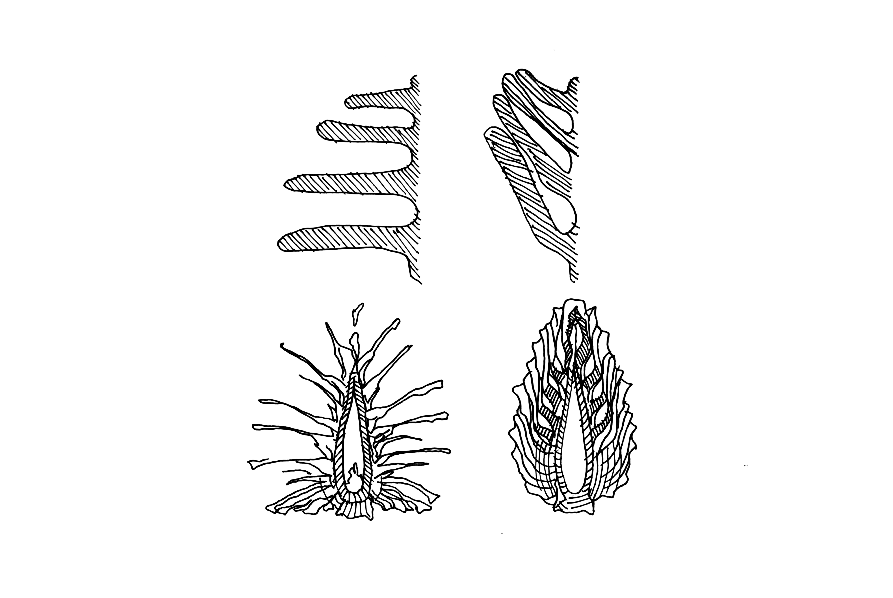How does nature change its shapes according to humidity?
How does nature change its shapes according to humidity?

Pinecone
Function
Hygroscopic motion
Biological mechanism
Pinecone scales involve the unique design of specialized cells called hygroscopic cells. These cells are found within the scales of the pinecone and are sensitive to changes in moisture levels. When the air is dry, the hygroscopic cells lose water and shrink, causing the scales to spread apart and the pinecone to open. Conversely, when the air becomes moist, the hygroscopic cells absorb water and swell, causing the scales to close tightly together, protecting the seeds from moisture and potential damage. The arrangement and structure of these hygroscopic cells within the pinecone scales enable them to respond to fluctuations in humidity, providing the pinecone with a mechanism to regulate seed dispersal and protect its seeds in varying environmental conditions.
bioWbutterfly
The intention is to identify the variety of available solutions for humidity-responsive materials, composites, and 3D-printed structures inspired by a pinecone. We were seeking the most straightforward low-tech, low-cost ideas that can be easily reinterpreted into wood-based and humidity-responsive sustainable design concepts. We identified the best 3D printing procedure that fits our needs and prototyped scales, testing their humidity response. Inspired by Sori Yanagi and his Butterfly Stool for Vitra in 1954, our Design team redesigned its original form with our biomimetic approach. The result is an artistic model that demonstrates how design can communicate with users on multiple levels through its biomimetic features. Through visual and haptic experiences, users gain information about the humidity in a particular space. The aim is to communicate how nature-inspired advancements in technology, materials, and construction can influence design evolution.
©design
Kaštierová J., Tončíková Z., Kružlicová L., Nôta R.
The 3D scene is loading – 0%
Start by dragging the model

BioWDesign Gallery 2024
We present the initial outcomes of the project at the intersection of art and science.
Our intention is to showcase the results of the scientific phase of the project in a creative manner. Our outputs consist of biomimetic models. These prototypes exhibit fascinating features. They are beautiful, possess remarkable properties, and, at first glance, appear as organic artifacts to designers. We sought a way to bring their future applications closer to designers and the public, and we chose a unique approach. You will become acquainted with our models through a distinctive scene.
We have selected iconic pieces – legends of 20th-century furniture design. They will come to life in the BIOWDESIGN GALLERY 2024 in a transformed, visionary art form. We intend to pay homage to renowned designers and the era in which these iconic pieces were created. Through their historical creations, we will provide a glimpse of a path for the future.